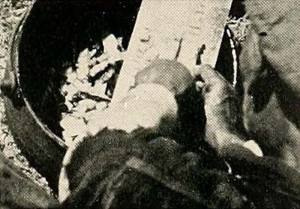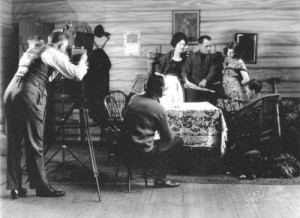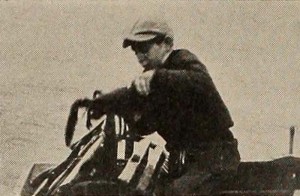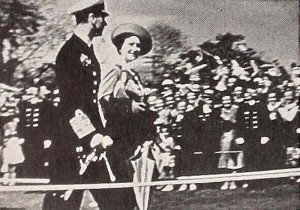"Film depicts a club picnic held at a Eaton Hall Farm. Film includes title cards. Footage includes families at picnic, playing games, canoeing, swimming and people filming with motion picture cameras" Archives of Ontario.

"Porpoise Oil presents a cleverly planned and charming story that shows how the Indians of the upper St. Lawrence region live today and how their ancestors obtained oil from the porpoise of the neighboring bays. Dr. Leighton was fortunate enough to find an old Indian who, in his younger days, had been a champion porpoise hunter and the picture tells in Kodachrome how the fish was shot and the oil tried. This constitutes an important document of Indian craft that, otherwise, in time would be lost to the world. A touch of humor throughout and a surprise ending serve to spice the film and to make it the excellent study that it is instead of a routine record film. The continuity is well developed and the photography is of good quality." Movie Makers, Dec. 1937, 630.
"A portrait of life on Pender Island, 1965. Shows the island's school; ferry service; crowning of the May Queen; church (and confirmation service); golf course; store; etc." British Columbia Archives.

"A Race for Ties" tells the story of a sawmill owner, Joe Atwood, and his race against a large timber company, headed by U. Cheetem, to sign an exclusive contract for railway ties. In addition to a plot driven by one of the region’s staple industries (the lumber industry), the film highlights the scenic nature of the region" - Michel S Beaulieu, Women Film Pioneers Project.

"The story, older than the craft of lobster fishing, of a ten year old boy earning his own first few pennies is told beautifully and sensitively in Riches from the Sea, by T. J. Courtney. As simple and human as the life of those it pictures, this film captures the spirit of the young fisher boy as he goes about his work of baiting and dropping lobster pots. They are his own, just given by his father. The money he makes from selling the lobsters he catches, some of which he boils on the beach, is also his own. Finally, when the last one is purchased by tourists along the dusty road and the boy races to the village, clutching his coins, to buy the coveted store window toy, the picture swells to its climax, fully equal to the importance of the occasion in the youngster's life. Lovely angles and expert composition bring beauty in black and white to the photography, and the acting, by Philip Boutilier and his little sister Lorraine, of Seabright, Nova Scotia, is unaffected and agreeable. This photoplay illustrates how completely the locale and life of an interesting community can be conveyed by threading it on a simple story of human nature." Movie Makers, Dec. 1938, 597.
"Recreates the revival of change-ringing of the bells at Vancouver's Holy Rosary Cathedral, after a five-year hiatus. Shows the training of bell-ringers and the ringing-in of the New Year. The bells of Westminster Abbey in Mission City are also heard. Members of the Vancouver Society of Change Ringers are featured. Winner of a Canadian Film Award in the amateur category (1961)" British Columbia Archives.
Amateur film footage of King George VI and Queen Elizabeth in Victoria, B.C. during the 1939 royal tour of Canada.

"What we have all wished a newsreel presentation of an important event could be has at last been brought to actuality by T. J. Courtney in his fine Kodachrome film Royal Visit — Halifax 1939. Let us hasten to add, also, that this film, besides being the apotheosis of the newsreel presents a carefully connected story of the events of the long anticipated day of the Royal visit in his city. Chiefly outstanding is the skillful and always appropriate use of closeups and atmosphere shots made with great care before, during and after the event and cut in with real skill to heighten the effect. But, most of all, the film is remarkable for its pace and sincere interpretation of public feeling; the early preparations for the Royal visit; the breathless expectation; the high enthusiasm at the time of Their Majesties' appearance, the promise of long remembrance at their departure — all these are clearly shown by Mr. Courtney's cinematic commentary. The complications that must have confronted him on this exciting day must be considered in our approval, too. He succeeded admirably in picturing the general excitement and enthusiasm, but at no time did his camera desert its steady support and accurate framing of the principal subject. The natural, close shots of the King and Queen are unsurpassed." Movie Makers, Dec. 1939, 632.
"Home movie film record of the 1939 royal visit by King George VI, showing preparations on the streets of Vancouver and the vicinity of the Hotel Vancouver, a parade, and the royal motorcade" British Columbia Archives.
"Girl Guides from Queen Margaret's School collect scrap metal and other materials for the war effort" British Columbia Archives.
This film may also be known as Queen Margaret School Salvage Drive, World War Two.
Total Pages: 12